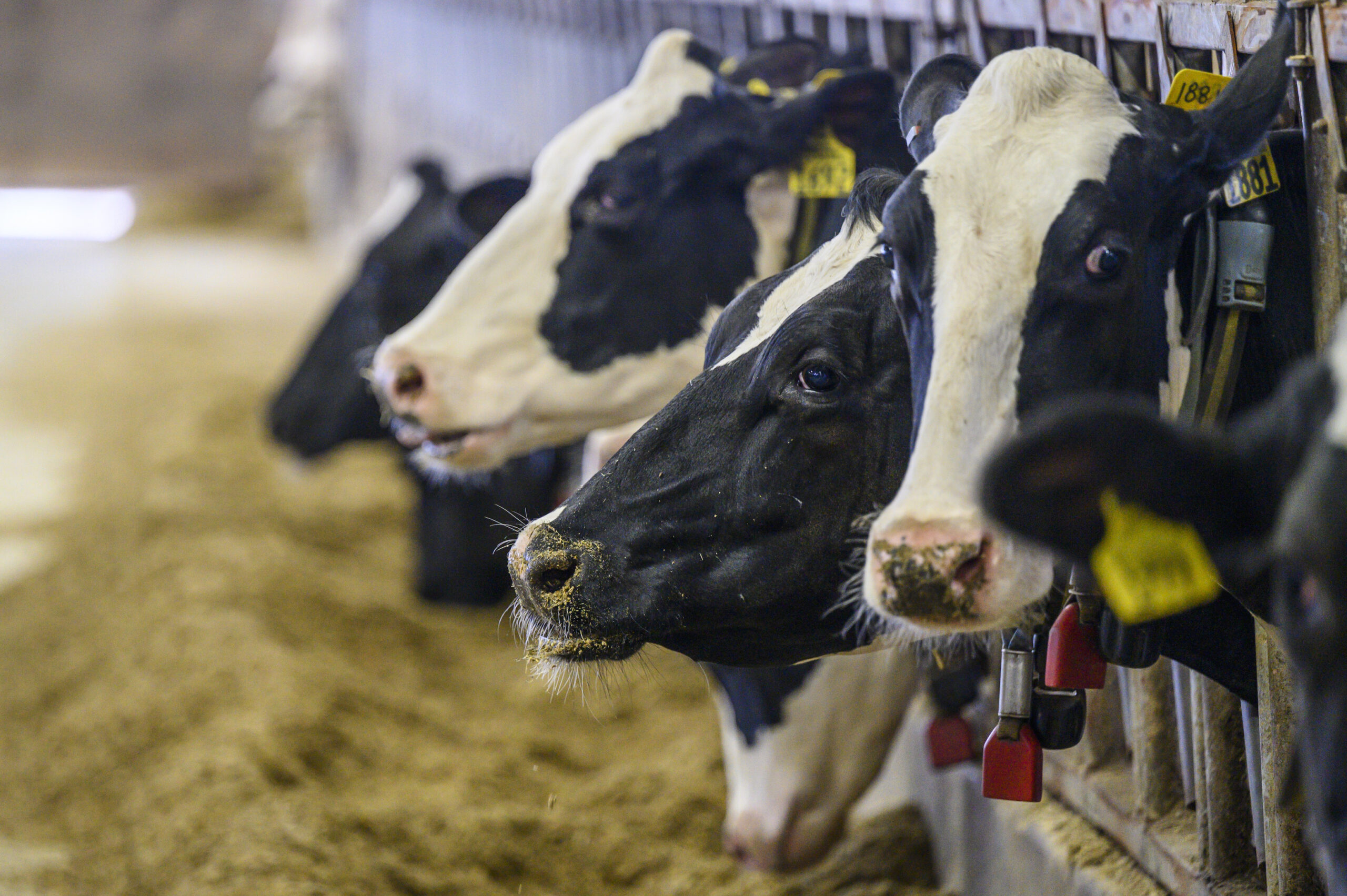Many Wisconsin dairy farmers are struggling with ongoing low prices for milk. We take a look at alternative ways to price milk and ask if any could be implemented here. We also discuss the discrimination mothers can face in the workplace. Plus, we get the latest in the lawsuit filed by Milwaukee Bucks player Sterling Brown against the city and the police department.
Featured in this Show
-
The Latest On The Sterling Brown Lawsuit
Milwaukee Bucks rookie Sterling Brown has filed a lawsuit against Milwaukee and the police department. The suit stems from Brown’s arrest earlier this year for a parking violation where he was tased by officers. The Milwaukee police officers argued that the use of force was necessary, alleging Brown was violent and combative. But body-cam footage released last month shows Brown was calm throughout the encounter. We talk to Ashley Luthern of the Milwaukee Journal Sentinel about the case.
-
Could Adopting Canada's Dairy System Stabilize US Milk Prices?
Low milk prices due in large part to a few years worth of overproduction has some experts wondering about whether a dairy model similar to Canada’s might be a solution.
Since 2014, when dairy farmers were receiving about $25 per 100 pounds of milk (a gallon is about 8.6 pounds), prices have dropped to about $17, said Mark Stephenson, director of dairy policy analysis for the University of Wisconsin-Madison.

Mark Stephenson. Photo courtesy of Mark StephensonWhile the U.S. places no regulations on how much milk a dairy farm can produce, Canada has taken a different approach, placing limitations on production to help stabilize the market. Additionally, the country places steep tariffs on dairy imports, Stephenson said.
Consequently, Canadian milk prices are more stable. But they’re also more expensive for consumers, with costs sometimes 25 percent higher than U.S. prices
But even in Canada there is controversy over whether this model is best, with some farmers frustrated they can’t produce more than their quota, even when the market demands it.
“We’ve had a few Canadian dairy farmers that have relocated down into the U.S., simply because they wanted the ability to produce more milk,” Stephenson said.
Stephenson said when prices were high a few years ago, domestic dairy farmers got the hint that demand was high, and began to produce more.
“Since we have roughly 40,000 dairy farmers in the country, they all receive that signal at the same time,” Stephenson said, noting that can quickly lead to overproduction and eventually push down prices.
Milk productions isn’t the problem, said Stephenson. According to a U.S. Department of Agriculture milk production report, production nationally totaled 17.9 billion pounds for the month of May, which is an increase of about 1 percent from May of last year.
“The real problem is the persistence of these low prices,” Stephenson said, noting that prices usually plunge low for a year or so before getting back to normal. “This time, we’re entering our fourth year of low prices.”
Whether Canada’s model provides a solution, Stephenson said there are primarily two reasons why milk prices can’t get back up.
First, there’s competition with the global dairy market, especially as the European Union has beefed up its production.
“That’s displaced some of the sales opportunities we would have had,” he said.
Additionally, Stephenson said Wisconsin in particular is being flooded with overproduction from states such as Michigan that can sell to processing plants at a reduced price.
Michigan has doubled its milk production in the past 15 years, but the state doesn’t have enough processing plant capacity to manage all of the milk produced. Those farmers then sell to plants in Wisconsin, who can take the “distressed” milk at a discounted rate.
Stephenson said it’s unlikely a system like Canada’s could find a home in the U.S. dairy market, because opinions vary so greatly on how to best control the market. While some might agree with Canada’s system, others will fight any regulations restricting them on how much they can produce and sell.
Stephenson is convinced the market will correct itself, but said it’s legitimate to work out a solution to prevent these long-lasting market ebbs.
“I do think it’s legitimate for us to think longer-term and say can we do something that keeps us from getting into these positions for a prolonged period of time?” he asked. “And I think the answer to that is yes.”
-
Is there a better way to price milk?
Dairy farmers have been dealing with low milk prices for a number of years, and that’s leading some to look at other ways to price milk. We talk to a dairy policy analyst about the model used in Canada.
-
Bias Against Mothers In The Workplace
One study has shown that in a pool of equally qualified job candidates, even a subtle indication that you’re a parent, especially a mother, could lower your chances of getting the job by nearly 40 percentage points. Many mothers have experienced different, discriminatory treatment in the workplace while pregnant or after having kids. This could include things like no longer being offered opportunities of travel, no longer being offered larger promotions, or being excluded from particular meetings. We talk to a journalist who focuses on women and work about how widespread this anti-mom bias really is and why it happens.
Episode Credits
- Rob Ferrett Host
- J. Carlisle Larsen Producer
- Rachael Vasquez Producer
- Natalie Guyette Producer
- Ashley Luthern Guest
- Mark Stephenson Guest
- Catherine Goldstein Guest
Wisconsin Public Radio, © Copyright 2025, Board of Regents of the University of Wisconsin System and Wisconsin Educational Communications Board.






